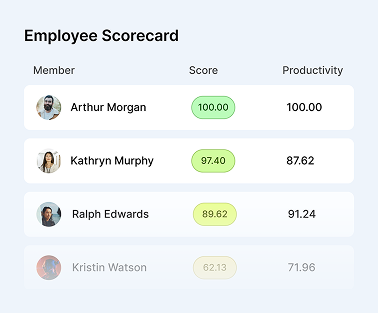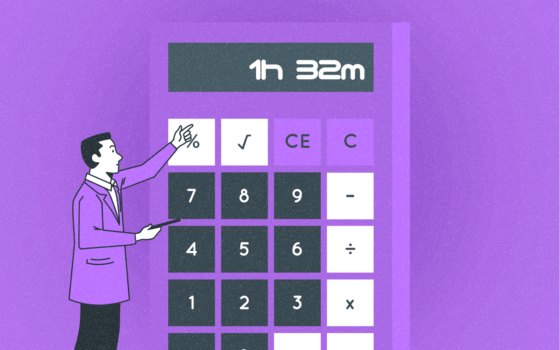Building the Leadership Roadmap

Leadership is not just about managing people, but about inspiring and guiding them towards achieving great results.
As a leader, it is important to have a clear vision of where you want to go and how you plan to get there. Developing a leadership roadmap can help you achieve your goals and lead your team to success.
In this blog post, we will explore the steps to developing a leadership roadmap that will help you become a more effective leader and achieve your goals.
From defining your vision and values to setting SMART goals and developing an action plan, we will guide you through the process of creating a roadmap that will set you and your team up for success. So, stay tuned and read on to learn how to become a better leader.

Leadership
Leadership is a topic that has been discussed in great detail over the years, yet it remains elusive. Many people talk about leadership without truly understanding what it means. At its core, leadership is the ability to inspire and influence others toward a common goal. It involves setting a direction, communicating effectively, and motivating others to achieve a shared vision.
From a philosophical perspective, leadership can be viewed as a moral obligation to serve others. It is not about exerting power or control, but rather about using one’s influence to make a positive impact on the world. Leaders should strive to inspire and empower those around them, rather than simply giving orders and expecting compliance. This requires a deep understanding of human nature, as well as a commitment to personal growth and self-reflection.
Leading the Way: A Roadmap to Successful Leadership
Becoming a leader is a journey that requires commitment, dedication, and a clear roadmap. A well-defined roadmap for leadership can help guide leaders toward achieving organizational goals and creating a positive work culture.
Let’s explore these steps in more detail!
Define Your Core Values
First and most important: Who are you as a leader? What defines you?
Core values will help you to answer those questions. Core values are fundamental beliefs and principles that guide an organization’s culture, behavior, and decision-making. They are important for a leadership roadmap because they provide a clear sense of direction, help build trust and credibility, and foster a sense of unity and purpose.
Some examples of core values include integrity, respect, excellence, teamwork, innovation, diversity, customer satisfaction, and social responsibility. James Clear, the author of the best-selling book “Atomic Habits” offers us a long list of core values. Check it out here.

For instance, if one of your core values is integrity, you would prioritize honesty and transparency in your leadership style, leading by example and holding yourself and others accountable for maintaining high ethical standards. This can promote trust and respect among team members and create a positive work environment.
Set Your Goals
After knowing which core values define you, set your goals around these values. When you have a clear understanding of your values, it becomes easier to set achievable goals that will help you move closer to your vision.
When setting your goals, it is important to be specific and measurable. You can use SMART goals. Vague goals can be difficult to achieve because you may not know when they have been accomplished. Additionally, setting too many goals can be overwhelming and lead to burnout. Choose a few key goals that align with your values and focus on achieving them.
Another important aspect of goal setting is creating a plan for achieving your goals. Break down each goal into smaller, manageable steps and set deadlines for each step. This will help you stay on track and make progress toward your goal!
Develop Your Skills
Developing skills is an essential part of achieving success, and it requires a significant amount of effort and dedication. In today’s fast-paced world, it’s crucial to keep up with the latest trends and technologies, and this requires both hard and soft skills.
- Hard skills refer to technical abilities that can be learned through training, education, and experiences. Examples of hard skills include computer programming, data analysis, and project management.
- Soft skills refer to personal attributes that enable individuals to communicate effectively, collaborate with others, and navigate complex situations.
When developing hard skills, it’s essential to identify the skills you need to succeed in your industry and seek out opportunities to enhance them. This may involve taking courses, attending workshops, or pursuing additional certifications. For example, if you’re a software developer, you may need to learn a new programming language or technology to stay competitive in the job market.
- Check this course on edX on how to learn soft skills
To develop soft skills, seek out experiences that allow you to practice and refine your abilities. This may involve taking on leadership roles in your community, volunteering, or participating in team-building activities. For example, if you’re looking to improve your communication skills, you may want to join a public speaking club or take a course on effective communication.

Build Your Network
Having a network is a crucial step in the roadmap to leadership. Whether you are just starting or have been in your field for years, connecting with others can help you develop your skills, gain new insights, and build a support system for your leadership journey. Here are some examples of networking and tips for better networking:
However, if you are an amateur, how do you network?
- Attend industry conferences or events and participate in workshops or panels to meet new people in your field.
- Join professional organizations or associations related to your industry or career path.
- Reach out to mentors or leaders you admire and ask for advice or guidance.
- Use social media to connect with professionals in your field and engage in online discussions or forums.
When networking take into account these tips:
- Be authentic and genuine in your interactions with others.
- Listen actively and ask thoughtful questions to learn from others.
- Follow up with new connections and maintain communication to build relationships over time.
- Offer to help others and share your expertise or knowledge where you can.
By building your network, you can gain valuable insights and support that can help you achieve your leadership goals!
Take Risks
Taking risks is a crucial part of the leadership journey, but it’s important to understand what risks are worth taking. Risks can come in many forms, such as making a difficult decision that could have a big impact, investing in a new project, or taking on a new role or responsibility.
When considering risks, it’s important to analyze the potential outcomes, both positive and negative, and weigh the potential benefits against the potential costs.
To analyze risks effectively, it can be helpful to gather information, seek advice from trusted mentors or colleagues, and consider different scenarios and possible outcomes. It’s important to take calculated risks rather than recklessly, and to be prepared to pivot or adjust course if necessary!
Avoid failures by:
- Having a backup plan
- Seeking feedback and support
- Staying flexible and adaptable.
Ultimately, the key to successfully taking risks as a leader is to stay focused on your goals and the bigger picture, and to approach challenges with a growth mindset. By embracing new challenges and taking calculated risks, leaders can achieve their full potential and inspire their teams to do the same.
Prioritize Efficiency
Efficiency is a crucial factor to consider when developing a roadmap to leadership. As a leader, one must be able to optimize resources and workflows to achieve maximum productivity. This involves identifying and eliminating inefficiencies in processes and systems, as well as leveraging technology to streamline operations.
Leaders can improve their efficiency by:
- Delegating tasks to capable team members
- Setting clear goals and expectations
- Prioritizing tasks and focusing on important ones
- Using technology tools to automate and streamline processes
- Holding efficient and effective meetings
- Taking breaks and practicing self-care to avoid burnout
For example, a CEO can delegate administrative tasks to an assistant, set quarterly goals for the company, prioritize client relationships over paperwork, use project management software to track progress, have stand-up meetings instead of lengthy sit-downs, and take breaks to exercise or meditate. By implementing these tips and utilizing technology, leaders can become more efficient and productive in their roles.
Maximize productivity of your business
Track employee productivity and simplify work with them
Tracking Progress
Remember the SMART (Specific, Measurable, Achievable, Relevant, and Time-bound) goals? You will be using these to track your progress! If all your goals get “smarted”, you can track your progress more effectively.
Another best practice is to establish Key Performance Indicators (KPIs). These KPIs should be relevant to your goals and should be tracked regularly. This will allow you to identify areas for improvement and make adjustments as necessary.
In addition to KPIs, it’s important to gather feedback from mentors, colleagues, and other professionals in your field. This feedback can provide valuable insights into areas where you may need to improve and can help you stay on track toward your goal.
If you find yourself struggling to meet your goals or if your progress is slower than expected, it may be necessary to take a detour. This could involve seeking additional training or education, seeking out new experiences and opportunities, or adjusting your goals to better align with your skills and interests.
Lead by Example
Leading by example is a critical factor in establishing yourself as a successful leader. It means setting the tone through your actions—demonstrating the behaviors, values, and standards you expect from others. This creates a culture of accountability, respect, and excellence that motivates your team to follow suit.
If you want your team to be punctual, be the one who shows up on time. If you value openness and collaboration, actively seek feedback and show that you’re willing to listen and grow.
You could start by asking yourself:
- Am I living the values I expect from my team?
- Do my actions align with the culture I want to build?
- How do I respond when things go wrong—and what does that teach others?
- What message am I sending through my daily behavior?
True leadership starts with you. Model what matters, and others will follow.
Empower Others
As a leader, it’s not just about achieving personal success, but also about creating a strong and thriving community. Engaging with others is a crucial step toward achieving this goal. By actively listening to your team members and taking their ideas and opinions into account, you can create a sense of belonging and inclusivity that fosters a dynamic and collaborative work environment.
Moreover, effective leadership is about empowering others to lead as well. By delegating responsibilities and providing opportunities for growth and development, you can cultivate a culture of leadership within your team. This not only benefits the individuals involved, but also strengthens the overall functioning of the team, as everyone can contribute their unique skills and perspectives.
Conclusion: Leadership Is a Moving Target
The roadmap to leadership is not a fixed path, but a dynamic and ever-changing journey. The traits that make a great leader today may not be the same tomorrow. That’s why it’s crucial for everyone aspiring to be a leader to adapt and evolve with the times.
As we navigate an ever-changing business landscape, those who can keep up with the pace of change and lead with agility will be the ones who succeed.
So, if you want to be a successful leader, keep learning, keep growing, and keep adapting. Be open to new ideas, embrace change, and always be ready to pivot when needed.
Remember, leadership is not about being perfect, but about being resourceful and resilient in the face of challenges. With the right mindset, skills, and attitude, anyone can become a great leader. So, take action today and start your leadership journey. The world needs more great leaders like you!
-The Monitask Team



